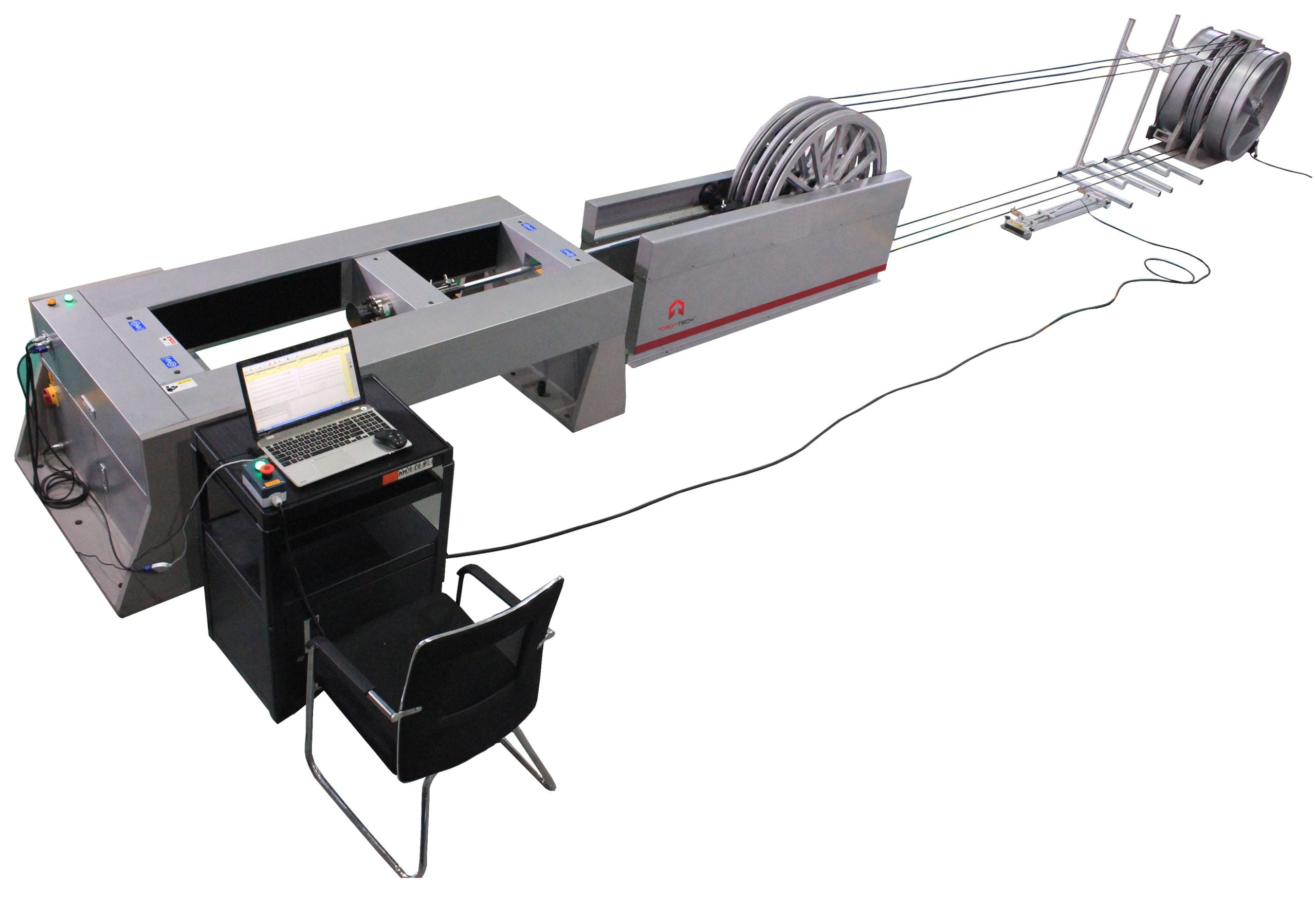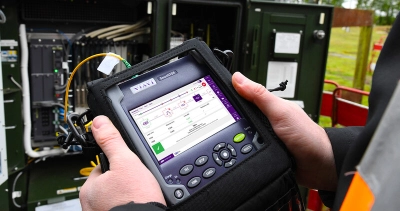Advanced robotic vision technologies enhance automation and precision.
Discover the Relevance of Optical Fiber Testing in Modern Telecom
In the world of modern-day telecommunications, the value of optical fiber testing can not be overstated, as it functions as the foundation for ensuring network reliability and performance. By applying regular testing protocols, operators can preemptively determine prospective concerns such as signal degradation, therefore protecting versus disturbances that could verify expensive. Advanced strategies like Optical Time-Domain Reflectometry play a pivotal role in this procedure, yet numerous may overlook the broader ramifications of these practices. What are the specific benefits that regular screening deals, and how might it shape the future landscape of telecoms?

Understanding Optical Fiber Screening
Optical fiber testing is an important process in telecoms that guarantees the stability and efficiency of fibre optic networks. This testing includes a variety of treatments created to evaluate the physical and practical characteristics of optical fibers - ofda. Secret specifications examined include optical power loss, bandwidth capacity, and mistake place, which are necessary for preserving premium communication links
The screening process typically entails making use of specific devices such as Optical Time-Domain Reflectometers (OTDR) and Optical Power Meters. OTDRs are employed to recognize and identify mistakes, mates, and ports within the fiber, while power meters determine the transmitted light signal toughness to identify performance.
Moreover, testing is conducted at different phases, consisting of during installation, maintenance, and troubleshooting, to make certain that the network fulfills industry requirements and functional needs. Compliance with standards established by organizations like the International Telecommunication Union (ITU) and the Telecommunications Market Association (TIA) is vital.
Advantages of Regular Examining
Regular screening of optical fibers returns countless benefits that dramatically boost network integrity and efficiency. Among the key benefits is the early discovery of possible concerns, such as breaks or degradation in the fibre, which can result in pricey downtime if left unaddressed (fibre testing equipment). By recognizing these troubles proactively, telecoms companies can decrease solution interruptions and guarantee regular connectivity for their clients
Additionally, regular testing assists to keep the stability of signal high quality. As optical fibers age, their efficiency can be influenced by variables such as environmental conditions and physical tension. Regular assessments permit the monitoring of signal loss and total transmission effectiveness, ensuring that the network runs at ideal degrees.
Another considerable advantage is conformity with sector standards. Normal screening supports adherence to governing demands, thereby mitigating lawful and financial threats connected with non-compliance. It enhances the total lifespan of the fiber framework by helping with prompt maintenance and repair work.

Common Testing Methods
Examining optical fibers utilizes various methods to guarantee the stability and performance of telecommunications networks. Amongst the most usual strategies is Optical Time Domain Name Reflectometry (OTDR), which examines the entire length of the fiber by sending out wikipedia reference a pulse Our site of light and determining the reflections caused by imperfections or breaks. This method provides comprehensive details concerning the area and intensity of mistakes.
Another common method is using Optical Power Meters, which gauge the quantity of light sent through the fiber. This strategy helps determine the loss of signal stamina, making certain that it fulfills sector standards. Additionally, Visual Fault Locators (VFL) are employed to recognize breaks or serious bends in the fiber by projecting a visible laser light into the cable.
Insertion loss screening is additionally essential, as it evaluates the loss of signal power resulting from links and splices within the network. Additionally, making use of Polarization Setting Diffusion (PMD) testing analyzes the effect of fibre qualities on signal honesty.
Each of these methods plays an important function in preserving the performance and integrity of optical fibre networks, eventually adding to seamless telecoms operations.
Influence On Network Performance
The honesty and efficiency of optical fiber networks directly influence overall network performance. In modern-day telecoms, the effectiveness of data transmission depends heavily on the high quality of the optical fibers made use of. Any type of degradation in the fiber's condition-- whether because of physical damage, contamination, or excessive bending-- can result in enhanced attenuation and signal loss, considerably impacting data integrity and rate.
Normal optical fiber screening is important to identify and fix potential concerns prior to they manifest as network failures or downturns. Methods such as Optical Time Domain Reflectometry (OTDR) and insertion loss screening make it possible for technicians to measure the performance of fiber links precisely. These tests not just evaluate the physical condition of the fibres but likewise ensure conformity with industry criteria, visit this web-site consequently securing the network's dependability.
In addition, a well-kept optical fibre network contributes to reduced operational costs and improved consumer contentment, as end-users experience fewer interruptions and greater data rates. Eventually, the emphasis on strenuous optical fiber screening methods serves as a cornerstone for maintaining durable telecommunications infrastructure, making certain that provider can fulfill the growing demands for bandwidth and connectivity in today's digital age.
Future Patterns in Evaluating
As we look in advance, innovations in innovation are poised to improve optical fibre testing in telecommunications. The increase of automation and expert system (AI) is expected to enhance the effectiveness and precision of testing processes. Automated screening systems can carry out detailed assessments with minimal human treatment, dramatically lowering the capacity for mistakes and expediting time-to-deployment.
Furthermore, the assimilation of machine discovering algorithms will enable predictive maintenance, enabling network suppliers to anticipate prospective problems before they escalate right into failures. This proactive strategy not just improves network reliability yet additionally maximizes operational prices.
An additional arising pattern is the development of mobile screening tools that provide real-time analysis - fibre testing equipment. These tools will certainly encourage technicians to carry out on-site diagnostics swiftly, facilitating quicker resolutions and enhancing service top quality
The growth of 5G networks even more necessitates the advancement of screening methodologies. As transmission capacity needs raise, conventional screening strategies may no more are adequate. Innovative services such as optical time-domain reflectometry (OTDR) and progressed spooky analysis will certainly become important in ensuring the stability and performance of high-speed links.

Conclusion
In verdict, optical fibre testing is essential for making sure the honesty and reliability of contemporary telecommunications networks. Normal screening methods not just assist determine prospective issues such as signal loss and faults but also contribute to boosted network efficiency and client satisfaction. As the demand for smooth connection continues to grow, the fostering of sophisticated screening approaches will play an important function in maintaining high-grade network standards and supporting the evolving landscape of telecommunications.